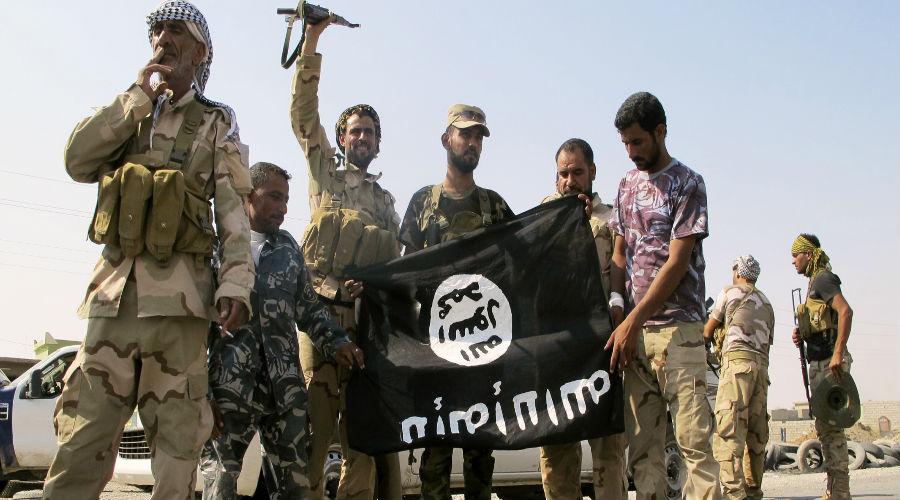Despite heavy defeats and strong military strikes, ISIS and some of its affiliates and cells are continuing their terrorist operations in Iraq, Syria and other areas, such as the Sahel-Sahara region and Afghanistan, by adopting a set of mechanisms through which it seeks to cope with the current pressures and stretch in new areas, after being forced out of their strongholds. Perhaps that is what former US Secretary of State Rex Tillerson warned, on February 14, 2018, that ISIS is reorganizing, that it still poses a threat and its defeat in Iraq does not mean its end. This raises many questions about the mechanisms that ISIS follows- after having been driven out of its strongholds- to withstand defeats, setbacks and pressures and make a comeback.
Multiple Blows
The heavy defeats of ISIS and some of its affiliates in recent years have forced the group out of some of its strongholds, particularly in Iraq and Syria. Consequently, the activities of the main organization have declined significantly in both countries, having lost nearly 98% of those areas, according to some estimates. However, it has recently managed to regroup some of its scattered cells and mount numerous blitz attacks against the opposing parties.
These defeats have not only confined to the main organization, but also some of its affiliates and groups, such as in Libya, where ISIS lost its stronghold in Sirte and was expelled from several other areas in Derna and Benghazi, from 2015 to 2017, pushing it southward. The US also dealt strong military strikes to ISIS-affiliated Khorasan State in Afghanistan. Moreover, other groups suffered strong blows, whether from the opposing parties or their rival terrorist organizations.
Different Orientations
ISIS has adopted numerous mechanisms through which it tries to deal with the repercussions of the defeats and the strong blows, the most notable of which are:
1- De-prioritizing territorial control: Territorial or spatial control is no longer a priority for ISIS in the recent period, namely military and organizational presence in a specific area of land, which was easily targeted through air raids and special operations. Instead, ISIS has begun to rely more on organizational activities, through operational presence in specific but uncontrolled areas, the same approach which has been adopted by al-Qaeda and its various branches since its inception.
Numerous estimates suggest that this is one of the most important mechanisms that helped ISIS survive so far. This shift is evident in the organization’s current activities in Syria, after losing almost all its main strongholds, prompting it to redeploy its members in the Syrian desert which stretches to the Iraqi borders. ISIS considers it a springboard to launch attacks, as the recent suicide attack against both the Syrian regime forces and the armed opposition in Daraa in southern Syria on 10 July 2018, killing 14 members from both sides.
2- Taking advantage of social relations: After leaving its strongholds, ISIS fighters were keen to take advantage of the social relations network, which is formed through kinship or affinity or tribal affiliation, allowing them to receive assistance, such as accommodation, financial, military and logistic support. The organization attempts to exploit this network to bounce back.
3- Redeploying: Most ISIS groups that suffered military defeats in many of the previously held areas rushed to reorganize, exploiting the instability in some areas to enhance their ability to achieve that goal. This was evident in the attempt of some of its cells to step up its operations in Mayadin in Deir ez-Zor, as it carried out a blitz attack against the Syrian regime forces and its supporting militias, on 18 April 2018, killing 18 of its members, however these cells managed to reach the outskirts of the Mayadin.
4- Seeking sources of funding: It is difficult for ISIS groups fleeing their strongholds to continue their activities without reliable sources of funding. Thus, these groups are keen to secure various sources of funding during the period of disappearance and dormancy, as did Abu Walid al-Sahrawi group operating in the Sahel-Saharan region, which sought to exercise the same activities previously pursued by al-Qaeda, such as cross-border smuggling, especially human trafficking, as well as the smuggling of goods, cigarettes, oil derivatives and drugs, enabling them to secure the necessary resources to finance their terrorist operations.
5- Activating sleeper cells: ISIS endeavors to plant sleeper cells in the areas from which it was expelled, whether in the form of individuals or groups, with the aim of maintaining its intellectual and organizational roots in those regions. ISIS tried to use that mechanism to return to those areas, such as ISIS members discovered in the Libyan city of Sirte after leaving it.
That may help explain why many observers are keen to issue repeated warnings of the risks associated with ISIS return to its previously-controlled areas, where it faced heavy military defeats, given its pursuit to rely on the above-mentioned mechanisms to do so. This, of course, lends special relevance to the calls to dry up the financial sources of ISIS, confront it intellectually, in parallel with defeating it militarily.


